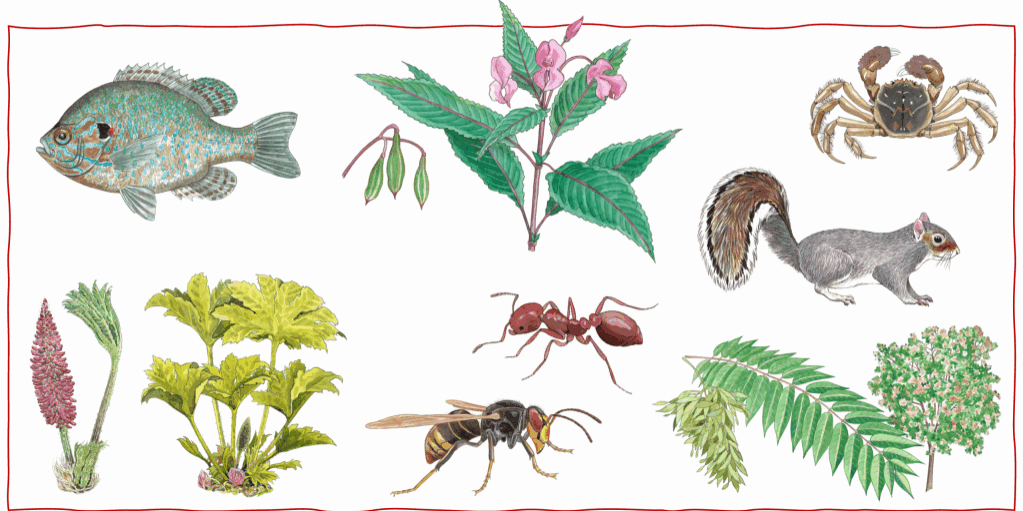Publishing in the Conservation Evidence Journal
Our first blog introduced the concept of evidence-based conservation and the work being carried out by the team at Conservation Evidence and the collaborations with Evidence Champions.
Here at our linked, online, peer reviewed, open access (and free to publish in) Conservation Evidence Journal, we publish studies that TEST conservation actions in order to add to the evidence base and support practitioners in carrying out their work. We welcome articles that test straightforward actions, such as whether a particular method is effective at removing a non-native species, or whether a simple modification to a nest box leads to higher nest occupancy and breeding success.

What does that mean in practice? A powerful opening statement of a lecture given by a remarkable woman, Rear Admiral Grace Hooper, was “The most damaging phrase in the language is ‘We’ve always done it this way’.” I think this can be the case for many conservation actions and practices around the world. The temptation is that someone considers that they know which action works best and how to carry out that particular action and so persists without investigating whether there is either a more effective technique or, worse, if that action is actually detrimental.
The first step to countering ‘we’ve always done it this way’ is ‘I wonder…’. Whether a practitioner or an academic, we are all keen to do the right thing for conservation.
Let’s imagine you are a newly appointed wildlife warden assisting with the management of a grassland site of conservation importance that, each year, is invaded by a hypothetical non-native plant species. Suppose the established method for tackling this particular invasive species involves spraying the site in spring (before the plants flower) and then hand-pulling remaining plants in late summer (before seed pods develop). However, this method is expensive, time consuming and only about 50% effective (based on anecdotal evidence from colleagues). You think ‘I wonder whether there is a better way to tackle this plant?’
Over lunch, you chat about the issue with your colleagues and collectively wonder whether cutting down the flowering plants once, in mid-summer, would be more effective (and cheaper and less time consuming) than the current method. You decide to conduct an experiment the following year to find out and want to share your findings with a wide range of practitioners by publishing your results (regardless of whether the new method works more effectively or not) in the Conservation Evidence Journal. The first step is to design a robust experiment to test the action. To help think about this, it may be useful to write a draft paragraph outlining your experiment as this could highlight any issues you may not have considered. In addition, this summary could form the basis of an abstract for the final publication. This could be along the lines of:

At the Conservation Evidence Journal, we reject a number of potential papers on initial assessment due to authors making one (or more) easily avoidable mistakes.
How to avoid rejection.
Is your paper within the scope of the journal? Read the Guidelines for Authors to make sure.
- The Conservation Evidence Journal encourages articles from anywhere around the world on all aspects of species and habitat management such as habitat creation, habitat restoration, translocations, reintroductions, invasive species control, changing attitudes and education.
- All papers include monitoring of the effects of the action and are written by, or in partnership with, those who did the conservation work.
Is there a comparison with a control or previous situation?
- CEJ publishes articles that test the effectiveness of a conservation action using a suitable experimental design (e.g. a site with the action to one without; at a site before and after the action was carried out; or comparing the effectiveness of two different treatments) and include a realistic number of replicates to be able to determine the effectiveness (or not) of the action. Keep it simple as it is much easier to determine the effectiveness of a single action rather than multiple actions carried out at the same time.
- We do not publish the results from monitoring of a single post-development mitigation scheme (if there is no comparison with a control or pre-development situation); large conservation projects with multiple interventions (meaning it is not possible to determine which action had an effect); monitoring without a clear experimental design; or lists containing species records from a single site.
Have you checked for existing evidence on Conservation Evidence site?
- We ask that you highlight how your study contributes to the existing evidence or is filling a gap in the evidence. The existence of previous studies in no way reduces the likelihood of us accepting your paper We want you to stand on the shoulders of giants, not on their toes!
Is your paper written in the correct style?
- The CEJ website has a template article to guide you and we ask that manuscripts are written as scientific papers. Reports for funders are typically much too long and need reducing considerably.
If you would like your work to be included in the Conservation Evidence Journal to add to the evidence base, head over to our website where you’ll find our latest volume together with the guidelines for authors and details on how to submit your manuscript. As the journal is fully open access, you can view and download any article to give you an idea of what we publish. Good luck!



